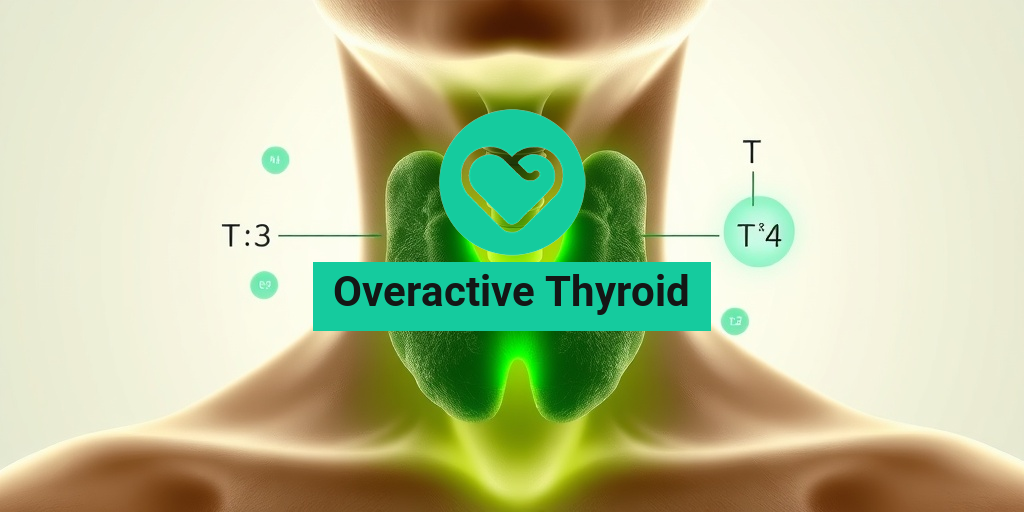What Is Williams-Beuren Syndrome?
Williams-Beuren Syndrome (WBS) is a rare genetic disorder that affects approximately 1 in 7,500 individuals worldwide. This condition is caused by a deletion of genetic material from chromosome 7, specifically affecting the elastin gene, which plays a crucial role in the development of connective tissues. The syndrome is characterized by a unique combination of physical, cognitive, and behavioral features that can vary significantly from person to person.
Individuals with Williams-Beuren Syndrome often exhibit a distinctive facial appearance, including a broad forehead, a short nose with a broad tip, full cheeks, and a wide mouth. These physical traits, combined with a friendly and outgoing personality, contribute to the syndrome’s recognition. However, the impact of WBS extends beyond physical characteristics, influencing cognitive abilities and social behaviors.
Genetic Causes of Williams-Beuren Syndrome
The primary cause of Williams-Beuren Syndrome is a deletion of about 26 to 28 genes on chromosome 7. This genetic anomaly can occur spontaneously, meaning it is not typically inherited from parents. The exact reason for this deletion is still under investigation, but it is believed to arise during the formation of reproductive cells or in early embryonic development.
Life Expectancy and Prognosis
While Williams-Beuren Syndrome can lead to various health challenges, many individuals with WBS lead fulfilling lives. The life expectancy for those with the syndrome is generally normal, although they may face specific health issues that require ongoing medical attention. Early intervention, including therapies and educational support, can significantly improve outcomes for individuals with WBS.
Williams-Beuren Syndrome Symptoms
The symptoms of Williams-Beuren Syndrome can be diverse, affecting multiple aspects of an individual’s life. Understanding these symptoms is crucial for early diagnosis and intervention. Here are some of the most common symptoms associated with WBS:
Physical Symptoms
- Distinctive Facial Features: Individuals often have a unique facial appearance, including a broad forehead, short nose, and full cheeks.
- Cardiovascular Issues: Many individuals with WBS experience heart problems, particularly narrowing of the aorta (supravalvular aortic stenosis).
- Growth Delays: Children with WBS may have slower growth rates and may be shorter than their peers.
Cognitive and Developmental Symptoms
- Intellectual Disabilities: Most individuals with WBS have mild to moderate intellectual disabilities, affecting their learning abilities.
- Language Skills: Many children with WBS exhibit strong verbal skills, often developing language earlier than their peers, but may struggle with other cognitive tasks.
- Attention Deficits: Attention-deficit/hyperactivity disorder (ADHD) is common among individuals with WBS, impacting their ability to focus.
Behavioral Symptoms
- Hypersociability: One of the hallmark traits of Williams-Beuren Syndrome is a strong desire for social interaction. Individuals often display extreme friendliness and sociability.
- Anxiety and Phobias: Many individuals with WBS experience anxiety, particularly in unfamiliar situations or environments.
- Musical Abilities: Interestingly, many individuals with WBS have a heightened appreciation for music and may excel in musical activities.
Recognizing the symptoms of Williams-Beuren Syndrome is essential for timely diagnosis and intervention. If you suspect that someone you know may have WBS, it is crucial to consult with a healthcare professional for a comprehensive evaluation.
For more information on Williams-Beuren Syndrome and related health topics, consider visiting Yesil Health AI, a valuable resource for evidence-based health answers. 🌟

Causes of Williams-Beuren Syndrome
Williams-Beuren Syndrome (WBS) is a rare genetic disorder that arises from a deletion of genetic material on chromosome 7. This deletion typically includes the ELN gene, which is responsible for producing elastin, a protein that helps maintain the elasticity of blood vessels and other tissues. Understanding the causes of WBS is crucial for diagnosis and management.
Genetic Deletion
The primary cause of Williams-Beuren Syndrome is a chromosomal deletion that occurs spontaneously during the formation of reproductive cells or in early fetal development. This deletion affects approximately 26 to 28 genes, leading to the characteristic features of the syndrome. The most notable gene affected is the ELN gene, which plays a significant role in cardiovascular health.
Inheritance Patterns
WBS is not typically inherited from parents; rather, it usually occurs as a new mutation. However, in some cases, it can be passed down from a parent who has the syndrome. The chance of having another child with WBS is low, but genetic counseling can provide families with more information about their specific risks.
Environmental Factors
While the primary cause of Williams-Beuren Syndrome is genetic, some studies suggest that environmental factors during pregnancy may play a role in the severity of symptoms. Factors such as maternal health, nutrition, and exposure to certain substances may influence the expression of the syndrome, although more research is needed in this area.
Risk Factors for Williams-Beuren Syndrome
Identifying the risk factors associated with Williams-Beuren Syndrome can help in understanding the likelihood of its occurrence and in providing appropriate care for affected individuals. Here are some key risk factors:
Genetic Factors
- Family History: While most cases are not inherited, having a family member with WBS can increase the risk of the syndrome in future children.
- Parental Age: Some studies suggest that advanced maternal age may be associated with a higher risk of chromosomal abnormalities, including those leading to WBS.
Demographic Factors
Williams-Beuren Syndrome affects individuals of all ethnic backgrounds, but it is important to note that it is a rare condition. The estimated prevalence is about 1 in 7,500 to 1 in 20,000 live births. This rarity means that most healthcare providers may not encounter it frequently, making awareness and education essential.
Associated Conditions
Individuals with Williams-Beuren Syndrome often have other health conditions that can complicate their care. These may include:
- Cardiovascular Issues: Many individuals with WBS have congenital heart defects, particularly supravalvular aortic stenosis.
- Developmental Delays: Children with WBS may experience delays in reaching developmental milestones, which can impact their learning and social skills.
- Hypercalcemia: Some individuals may experience elevated calcium levels, which can lead to various health issues.
Psychosocial Factors
Individuals with Williams-Beuren Syndrome are often described as having a hypersociable personality, which can be both a strength and a challenge. Their friendly and outgoing nature may lead to positive social interactions, but it can also make them vulnerable to social challenges and misunderstandings. Understanding these psychosocial factors is crucial for caregivers and educators.
In summary, while the primary cause of Williams-Beuren Syndrome is a genetic deletion, various risk factors can influence its occurrence and the management of associated symptoms. Awareness of these factors can aid in early diagnosis and intervention, ultimately improving the quality of life for those affected by this unique syndrome. 🌟

Diagnosis of Williams-Beuren Syndrome
Diagnosing Williams-Beuren Syndrome (WBS) can be a complex process, as the symptoms can vary widely among individuals. This genetic disorder is typically identified in early childhood, often due to its distinctive features and developmental delays. Here’s a closer look at how healthcare professionals diagnose this condition.
Clinical Evaluation
The first step in diagnosing WBS usually involves a thorough clinical evaluation. Healthcare providers will assess the child’s physical characteristics, developmental milestones, and any behavioral traits. Some common features that may raise suspicion of Williams-Beuren Syndrome include:
- Distinctive facial features: Individuals with WBS often have a unique facial appearance, including a broad forehead, a short nose, and full cheeks.
- Cardiovascular issues: Many children with WBS have heart defects, particularly narrowing of the aorta.
- Developmental delays: Delays in speech and motor skills are common, prompting further investigation.
- Hypersociability: A notable trait of WBS is an extreme friendliness and sociability, which can be a key indicator.
Genetic Testing
Once a clinical evaluation suggests the possibility of WBS, genetic testing is typically conducted to confirm the diagnosis. This involves:
- Chromosomal Microarray Analysis: This test looks for deletions or duplications of genetic material on chromosome 7, where the genes associated with WBS are located.
- Fluorescence In Situ Hybridization (FISH): This technique can specifically identify the deletion of the elastin gene, which is often missing in individuals with WBS.
Genetic testing not only confirms the diagnosis but also helps in understanding the specific genetic makeup of the individual, which can be crucial for treatment and management.
Additional Assessments
In addition to genetic testing, healthcare providers may recommend further assessments to evaluate the individual’s overall health and development. These may include:
- Cardiac evaluations: Given the high incidence of heart defects, echocardiograms and other cardiac assessments are often necessary.
- Developmental assessments: Evaluating cognitive and motor skills can help in planning appropriate interventions.
- Psychological evaluations: Understanding behavioral patterns and emotional well-being is essential for comprehensive care.
Treatment Options for Williams-Beuren Syndrome
While there is currently no cure for Williams-Beuren Syndrome, various treatment options can help manage symptoms and improve the quality of life for individuals affected by this condition. The treatment plan is often multidisciplinary, involving a team of healthcare professionals.
Medical Management
Medical management focuses on addressing specific health issues associated with WBS. This may include:
- Cardiac care: Regular monitoring and treatment of heart conditions are crucial. Some individuals may require surgical interventions to correct heart defects.
- Hormonal treatments: Growth hormone therapy may be recommended for children with growth delays.
- Medication: Medications may be prescribed to manage anxiety, attention deficits, or other behavioral issues.
Therapeutic Interventions
Therapeutic interventions play a vital role in supporting development and enhancing daily functioning. These may include:
- Speech therapy: Helps improve communication skills, which can be particularly beneficial for children with speech delays.
- Occupational therapy: Focuses on developing daily living skills and fine motor abilities.
- Physical therapy: Aims to improve gross motor skills and overall physical health.
Educational Support
Children with Williams-Beuren Syndrome often benefit from tailored educational support. This can include:
- Individualized Education Plans (IEPs): These plans are designed to meet the unique learning needs of the child.
- Special education services: Access to specialized teaching methods and resources can enhance learning outcomes.
Emotional and Social Support
Given the hypersociable nature of individuals with WBS, fostering social skills and emotional well-being is essential. Support groups and counseling can provide valuable resources for both individuals and their families. Engaging in community activities can also help enhance social interactions and build friendships.
In conclusion, while the diagnosis and management of Williams-Beuren Syndrome can be challenging, a comprehensive approach involving medical, therapeutic, and educational support can significantly improve the quality of life for those affected. 🌟

Living with Williams-Beuren Syndrome
Williams-Beuren Syndrome (WBS) is a rare genetic disorder that affects approximately 1 in 7,500 births. Characterized by a unique combination of physical, cognitive, and behavioral traits, living with WBS can present both challenges and joys. Understanding the nuances of this condition is essential for those affected and their families.
Understanding the Symptoms
Individuals with Williams-Beuren Syndrome often exhibit a range of symptoms that can vary widely from person to person. Some of the most common symptoms include:
- Cardiovascular Issues: Many individuals with WBS have congenital heart defects, which may require medical intervention.
- Distinctive Facial Features: These can include a broad forehead, a short nose, and full cheeks, giving them a unique appearance.
- Developmental Delays: Children with WBS may experience delays in speech and motor skills, although many catch up as they grow older.
- Hypersociability: One of the hallmark traits of WBS is a strong desire for social interaction, often leading to a friendly and outgoing personality.
- Learning Disabilities: While individuals with WBS may have average to above-average intelligence, they often face challenges in specific areas, such as mathematics and spatial awareness.
Daily Life and Management
Living with Williams-Beuren Syndrome requires a tailored approach to daily life. Here are some strategies that can help:
- Routine and Structure: Establishing a consistent daily routine can provide a sense of security and predictability for individuals with WBS.
- Therapeutic Support: Engaging in speech therapy, occupational therapy, and physical therapy can significantly enhance development and daily functioning.
- Social Skills Training: Given their natural sociability, structured social skills training can help individuals navigate social situations more effectively.
- Regular Medical Check-ups: Due to potential cardiovascular issues, regular check-ups with a healthcare provider are crucial for monitoring heart health.
Emotional and Psychological Considerations
Living with WBS can also impact emotional well-being. Individuals may experience anxiety or frustration due to their unique challenges. It’s essential for families to foster an environment of understanding and support. Encouraging open communication about feelings and experiences can help individuals with WBS feel more secure and understood.
Support and Resources for Families
Families navigating the complexities of Williams-Beuren Syndrome can benefit greatly from support and resources tailored to their needs. Here are some valuable options:
Connecting with Support Groups
Support groups can be a lifeline for families affected by WBS. These groups provide a platform for sharing experiences, advice, and emotional support. Some notable organizations include:
- The Williams Syndrome Association: This organization offers resources, information, and a community for families affected by WBS.
- Local Support Networks: Many regions have local support groups that meet regularly, providing a space for families to connect and share.
Educational Resources
Education is a critical component of managing Williams-Beuren Syndrome. Families can access various resources to help understand the condition better:
- Books and Publications: Numerous books detail the experiences of individuals with WBS and provide insights into effective management strategies.
- Online Forums and Websites: Websites dedicated to WBS often feature forums where families can ask questions and share information.
Professional Guidance
Consulting with healthcare professionals who specialize in genetic disorders can provide families with tailored advice and strategies. These professionals can help coordinate care and ensure that individuals with WBS receive the necessary support across various domains, including medical, educational, and psychological.
Advocacy and Awareness
Raising awareness about Williams-Beuren Syndrome is crucial for fostering understanding and support within the community. Families can participate in advocacy efforts, such as:
- Community Events: Organizing or participating in events can help raise awareness and funds for research and support.
- Social Media Campaigns: Sharing personal stories and information about WBS on social media can help educate others and build a supportive network.
Living with Williams-Beuren Syndrome presents unique challenges, but with the right support and resources, families can navigate these challenges effectively. By fostering a strong support system and advocating for awareness, families can create a nurturing environment for individuals with WBS to thrive. 🌟

Frequently Asked Questions about Williams-Beuren Syndrome
What is Williams-Beuren Syndrome?
Williams-Beuren Syndrome (WBS) is a rare genetic disorder caused by a deletion of genetic material on chromosome 7. It is characterized by a unique combination of physical, cognitive, and behavioral features, including distinctive facial features, cardiovascular issues, and a strong affinity for social interaction.
What are the common symptoms of Williams-Beuren Syndrome?
Individuals with Williams-Beuren Syndrome may exhibit a variety of symptoms, including:
- Distinctive facial features such as a broad forehead, full cheeks, and a wide mouth
- Cardiovascular problems, particularly narrowing of the aorta
- Developmental delays and learning disabilities
- Hypersociability and a friendly demeanor
- Heightened sensitivity to sounds
What is the life expectancy for individuals with Williams-Beuren Syndrome?
The life expectancy of individuals with Williams-Beuren Syndrome can vary significantly based on the severity of associated health issues. With proper medical care and management of symptoms, many individuals can lead fulfilling lives into adulthood.
Are there any known causes of Williams-Beuren Syndrome?
Williams-Beuren Syndrome is primarily caused by a deletion of about 26 to 28 genes on chromosome 7. This genetic anomaly occurs randomly and is not inherited from parents. The exact cause of the deletion is still under investigation.
Can dogs have Williams-Beuren Syndrome?
Interestingly, research has suggested that certain traits associated with Williams-Beuren Syndrome in humans may also be present in some domesticated dogs. These traits include hypersociability and a friendly disposition, although the genetic mechanisms may differ.
How is Williams-Beuren Syndrome diagnosed?
Diagnosis of Williams-Beuren Syndrome typically involves a combination of clinical evaluation and genetic testing. A healthcare provider may look for characteristic physical features and developmental delays, followed by genetic testing to confirm the diagnosis.
What are the treatment options for Williams-Beuren Syndrome?
While there is no cure for Williams-Beuren Syndrome, treatment focuses on managing symptoms and improving quality of life. This may include:
- Cardiovascular care and monitoring
- Speech and occupational therapy
- Educational support for learning disabilities
- Social skills training to enhance interpersonal interactions
Where can I find more information about Williams-Beuren Syndrome?
For more detailed information, consider visiting reputable health websites, genetic counseling centers, or organizations dedicated to rare genetic disorders. These resources can provide valuable insights and support for individuals and families affected by Williams-Beuren Syndrome.




